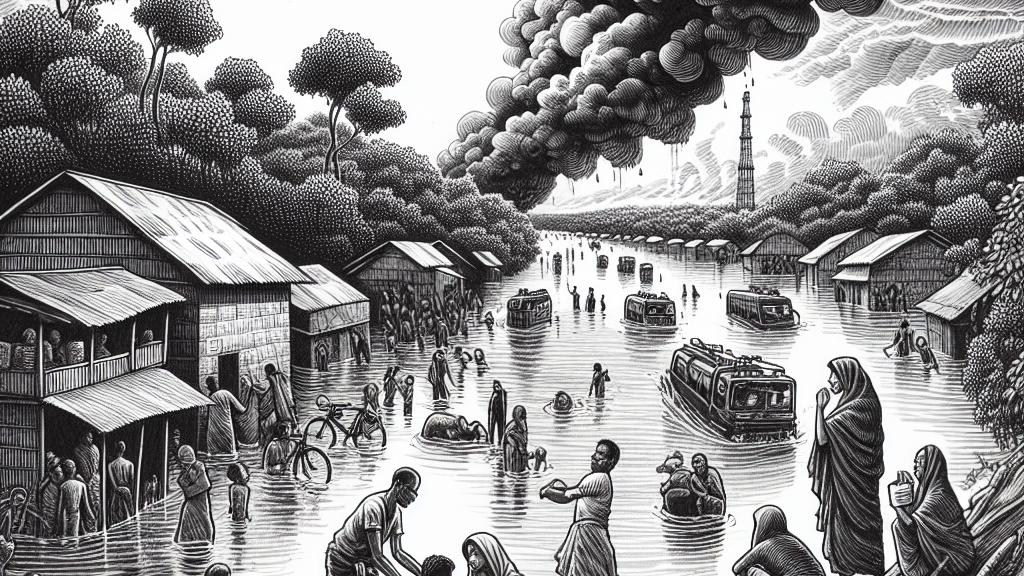Navigating the Flood: A Battle Against Waterborne Diseases in Bangladesh
Overview
- Severe flooding in Bangladesh has triggered a public health emergency, increasing the risk of waterborne diseases.
- Millions are left without access to safe drinking water and basic necessities in the wake of catastrophic floods.
- Urgent, coordinated action from local and international agencies is needed to prevent disease outbreaks and support recovery.

The Flood Impact in Bangladesh
In August 2024, Bangladesh faced one of its worst flooding episodes in decades, impacting regions like Feni and Lakshmipur. With at least 54 confirmed deaths and millions stranded, the humanitarian crisis is escalating. Many residents find themselves desperate for food, clean drinking water, and medical support, exacerbated by blocked roads complicating rescue operations. Authorities from the Bangladesh Meteorological Department warn of continued risks as monsoon rains threaten to prolong flooding. This situation highlights the need for immediate intervention to safeguard vulnerable populations enduring these catastrophic conditions.
Increasing Risk of Waterborne Diseases
As floodwaters slowly recede, the threat of waterborne diseases looms large. Approximately 3,000 people have already been hospitalized due to illnesses linked to contaminated water sources since the floods began. Health officials are sounding the alarm about the potential for epidemics without the prompt availability of clean drinking water. Many of the affected areas remain submerged, making access to healthcare nearly impossible for stranded individuals. Local residents report that despite water being everywhere, it is unsafe to drink, with many already falling ill. This dangerous situation underscores the critical need for the government and NGOs to mobilize resources rapidly to prevent a public health disaster.
Broader Economic and Environmental Challenges
The aftermath of the flooding crisis in Bangladesh not only presents immediate health challenges but also significant economic repercussions. The garment industry, a vital part of the nation's economy, is grappling with serious disruptions due to halted cotton supplies from ports like Chittagong. This disruption has led to production shortages amid a backlog of orders, affecting livelihoods and exports. The United Nations has issued warnings, stating over two million children are at risk as the floods continue to hamper access to essential services. To surmount these challenges, Bangladesh must prioritize sustainable development strategies, focusing on enhancing infrastructure and disaster preparedness, ensuring that such devastating impacts from climate-related events can be mitigated in the future.

Loading...